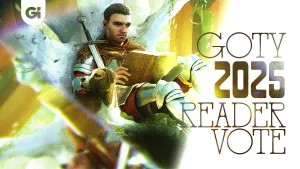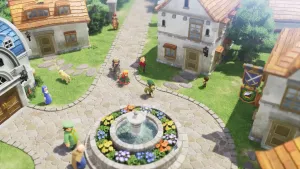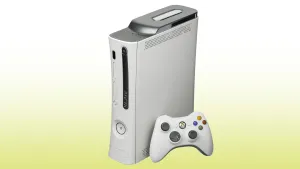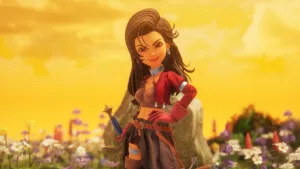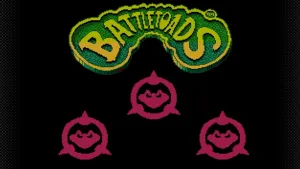The Order: 1886 Developer Ready At Dawn Expanding In New Directions

On the back of this year's release of The Order: 1886, developer Ready At Dawn has announced some high-level changes to the studio to focus it for the future. Paul Sams – a 20-year veteran of Blizzard (including spending the past 10 years as its COO) takes over as Ready At Dawn's CEO, with co-founder Ru Weerasuriya sliding over as president and chief creative officer. Ready At Dawn is also inaugurating a new office in Austin, Texas, to tackle business development and publishing. We talked with both Sams and Weerasuriya about the moves and how they will help the studio grow while also focusing on creating quality gaming experiences.
With the Austin office working on publishing,
will Ready At Dawn self-publish its own titles, publisher other studios' games,
or both?
Sams: It is our aspiration to own
and publish our own titles and we have begun the process of exploring how we will
achieve that goal. At the same time, we recognize the need to explore all
options in front of us so that we make the right decision for our company,
employees, and players. For the time being, we intend to focus on publishing our
own games. To think about publishing other studio's games would be getting
ahead of ourselves at this point.
Does Mr. Sams' appointment or the creation of a
publishing arm change the studio's close relationship with Sony? Do you have plans for more games on non-Sony platforms [Ready At Dawn did the Wii port of Okami – ed.]?
Sams: We have enjoyed a long and
mutually beneficial relationship with Sony. They are a great company with whom
we have shared many successes over the years. As a result, it is hard to
imagine not seeing our future games on one or more of the Sony platforms. At
the same time, we have worked very hard to make sure that our engine and
technology suite is multiplatform. What we did on the PS4 for The Order: 1886,
we can also do today on Xbox One, PC, and on an additional unannounced platform. [Ready at Dawn reached out to us with a clarification after this interview was published. The studio says that it does not have knowledge of an unannounced platform, but rather was speaking about its plans to develop for an existing platform that is new to the studio.]
 Weerasuriya: We will always value our
partnership with Sony and as a result the close relationship we have enjoyed.
For the last decade, RAD has showcased many different PlayStation platforms
through the games we have created, and we definitely hope to continue in that
endeavor. Paul's arrival only helps us in that sense, by better placing all of the
teams' efforts on creative and development while at the same time broadening
our horizons as a studio.
Weerasuriya: We will always value our
partnership with Sony and as a result the close relationship we have enjoyed.
For the last decade, RAD has showcased many different PlayStation platforms
through the games we have created, and we definitely hope to continue in that
endeavor. Paul's arrival only helps us in that sense, by better placing all of the
teams' efforts on creative and development while at the same time broadening
our horizons as a studio.
Was RAD waiting to finish
The Order: 1886 before this reorganization and new office, or was this spurred by other events?
Weerasuriya: The thought of bringing
someone in to RAD had existed for a while, but we had either never found the
right candidate or the right time to do this. I have long wanted to concentrate
my efforts on creative and in order to do so, I needed the right person to take
over on the business side. Handing over the reins after more than a decade of
being in business is not easy. Furthermore, after a long time searching for the
right fit, I was not convinced that this person could be found. Having counted
Paul as a close friend for so many years, I have always admired and respected
him as one of the best executives in our industry. It just so happened that our
paths crossed again as we were finished with the development on The Order: 1886
and our respective circumstances just made this possible.
What, in particular, about Mr. Sams' experience
with Blizzard makes him the right fit for RAD and its plans? Is RAD interested
in making online or eSports-focused titles, or games in different genres than
RAD has explored previously?
Sams: I worked with an
exceptionally talented team at Blizzard for nearly 20 years. During that time I
was responsible for all aspects of the company' global operations outside of
product and platform development. Along the way, I had the opportunity to learn
many lessons including how to properly and effectively manage growth, build and
protect a global brand, support and nurture a development-driven culture, and
direct a very high performance and highly profitable organization. It was not
easy, but it did prepare me to do other great things that I hope to bring to
Ready At Dawn.
As for making online games or ones that focus on eSports, it all comes down to what our development team is passionate about building and playing next. You will not see me trying to force feed our teams to do things that I know how do unless that is what they really want to do. The only way you can make some of the best games in the world is by having a development team building what really geeks them up. As I have always said, gamers don't buy business models – they buy great games. We will continue to be development driven culture at RAD that only seeks to make killer games.
Can you talk about your previous professional relationship together?
Sams: Ru and Andrea – the two
owners of RAD – both worked at Blizzard in the late '90s and the early 2000s.
During their time there, they were two of my favorite colleagues, and they were
both dear friends whom I spent countless hours with. When they left to start
RAD, I was devastated, but I understood that they needed to go spread their
wings and try to build their own company. I respected it, but I sure did miss
them. We have often joked about working together again, but in all honesty none
of us really believed it would happen. Being together again is surreal. I can't
wait to see what we can do together.
Weerasuriya: I will echo Paul's sentiment. We have counted Paul as a very dear friend, and I have often relied on him as such. I have the fondest memories of my time at Blizzard as many of the people there have remained very close over the years. Even after leaving to start RAD, Paul and I have had the chance to remain close, often reminiscing about the past and, as he said, speculating about working together at some point or the other. Though such a situation seem far-fetched then, having him now be part of our team is not only surreal, it is rewarding on so many fronts.
With RAD's history on PSP, does the company want
to return to handheld gaming? Is mobile/tablet development something RAD is
interested in?
Sams: We are platform agnostic at
this point. We want to make great games, and I truly believe that every game is
not right for every platform. However, if a game that we want to make plays
great on mobile, tablet, or some other type of portable or non-traditional
device, then I think that we would seriously consider it. Of course, the
install base would need to be big enough to justify it, but if it ultimately
made sense we would consider it.
 Weerasuriya: We have always picked projects
that we were passionate about, regardless of the platforms they were targeted
for. That mentality won't change. As gamers, we all enjoy different type of
games and different experience on a multitude of platforms. That is often what
has guided us when pitching certain games. With our technology being very
versatile, it allows us to keep our choices open regarding what project we
would like to take on next.
Weerasuriya: We have always picked projects
that we were passionate about, regardless of the platforms they were targeted
for. That mentality won't change. As gamers, we all enjoy different type of
games and different experience on a multitude of platforms. That is often what
has guided us when pitching certain games. With our technology being very
versatile, it allows us to keep our choices open regarding what project we
would like to take on next.
How will Mr. Weerasuriya's new position as
President/CCO differ from his creative role on The Order: 1886 for future
projects?
Sams: Ru, Andrea, and my separation
of duties are pretty simply. Ru is in charge of game and IP development. Andrea
is in charge of technology. I am responsible for all of the other stuff outside
of game development and tech. Big company decisions will be contemplated,
discussed, and decided by me, Ru, and Andrea – with strong input from other key
members of our group of company directors.
Weerasuriya: While working on our past games, it has always been a challenge to balance business and creative. Although I spent countless hours of my days on The Order: 1886, there were often times when I needed to devote my attention to business, while in the back of my mind, wanting to spend more time on the game itself. That constant switch in mindset is not easy to manage long term. With Paul's arrival, I am now looking forward to placing all my attention on creative.
Does RAD plan to license any of its technology or
share it with other studios?
Sams: We are very proud of the
multi-platform technology that we have built. We have been approached by both
publishers and developers on countless occasions about the possibility of using
or licensing our engine and technology suite. At this point, we have not chosen
to license our technology as it is part of our competitive advantage. However,
if the right opportunity fell into our lap, we would give it due consideration.
Weerasuriya: Further to our game technology, we are now also devoting some of our time into furthering the work we have done on 3D scanning and motion capture for The Order: 1886. We now have a state-of-the-art 3D scanning and motion-capture facility only a few minutes from our studio. Having these options in-house allows us to cover a wider range of needs for development. And on that front, we are looking to have that facility available for lease and provide our expertise to others.
How has The Order: 1886 performed commercially? Did it meet your commercial expectations?
Sams: While we would love to share
with you how well The Order: 1886 has performed since it release, those are
numbers that only Sony can divulge. Suffice it to say, we are very proud of that
game, and we are well on our way to achieving the sales performance that we
sought.
What IP does RAD currently own, and are there ones you want
to claim in the future?
Sams: We have two original IPs currently under development that we own. However, we
are not at a point in the development process that we can discuss them. Stay
tuned...
To learn more about Ready at Dawn, click here to watch our video feature on the studio's full history.
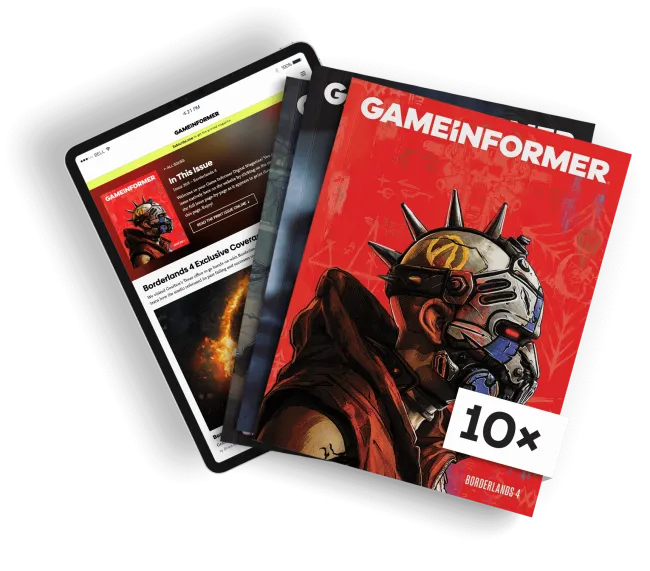
Get the Game Informer Print Edition!
Explore your favorite games in premium print format, delivered to your door.
- 10 issues per year
- Only $4.80 per issue
- Full digital magazine archive access
- Since 1991


